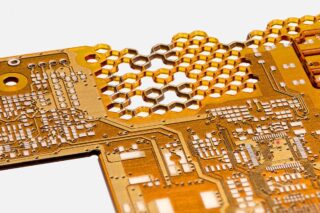The demands on today’s food manufacturers regarding quality are constantly increasing, and the need for fast, cost-effective, and user-friendly methods to monitor and ensure food integrity is growing. FT-NIR spectroscopy offers a powerful technology for controlling raw materials, intermediate, and finished products along the production chain.
Article written by Dagmar Behmer, Marketing Manager – Applied Spectroscopy at Bruker
Advantages of FT-NIR Spectroscopy
FT-NIR spectroscopy enables rapid measurement of food samples in just 15-30 seconds per sample, without reagents, solvents, or gases, thus reducing costs and health concerns. No sample preparation is required, saving time and eliminating errors.
Although NIR spectra may appear non-specific, chemometric methods can extract extensive information, allowing for the simultaneous determination of multiple parameters. In food analysis, a single measurement can analyze key parameters such as fat, protein, moisture/dry matter, lactose, ash content, and other specific metrics.
This makes FT-NIR spectroscopy an ideal replacement for several traditional lab chromatographic or wet chemical analyses. Additionally, FT-NIR spectroscopy offers significant benefits in manufacturing processes by enabling real-time optimization. This technology helps reduce waste and rework, leading to cost savings and promoting more sustainable manufacturing practices.
Find all Bruker products here
Applications in the Food Industry
- Milk & Dairy Products:
Milk, the basis of all dairy products, requires stringent quality control. The composition of raw milk varies, necessitating standardization to ensure consistent product quality. FT-NIR spectrometers like the MPA III combined with liquid sampling offer optimal solutions for raw milk and liquid dairy products, as well as for solid and semi-solid materials like cheese, or dairy powders. - Meat & Sausages:
Continuous analysis of fresh meat and other raw materials is essential to maintain consistent batch quality in products like sausages and salami. FT-NIR spectrometers like the TANGO measure fat, protein, and moisture content simultaneously, aiding in production decisions and optimizing product shelf life. - Edible Oils & Fats:
Quality assessment of edible fats and oils with FT-NIR involves parameters like fatty acid composition, iodine value, free fatty acids, trans fats, and more. FT-NIR is also used to analyze frying oils to monitor quality degradation and associated health risks. Another application is the analysis of marine oils for individual omega-3 fatty acids as well as oxidation parameters.
Other Applications include Nutritional Label Screening, where the technology can quickly verify nutritional claims on labels in under a minute, determining if further testing is needed and Food Safety since FT-NIR can detect adulterations by creating a fingerprint of the entire sample, comparing incoming raw materials with known quality standards.

Production Control
In production, FT-NIR ensures optimal operation and minimal waste, e.g. by:
- determining mixing quality and control dosages.
- optimizing and shortening drying processes by measuring residual moisture.
- analyzing product parameters to react swiftly if specifications are at risk.
One example is butter production, where keeping the water content close to the 16% limit is essential. By using FT-NIR to monitor moisture content, producers can ensure accurate water dosing. Even minor improvements in this process can lead to significant economic gains over time.
Contactless NIR analyzers like the BEAM can measure solids on conveyors or through sight glasses in pipes and chutes, while up to 6 transmission probes and flow cells connected to the MATRIX-F II can monitor liquids like milk, oils, or beverages inline, making it a valuable investment for high-throughput operations.
FT-NIR technology stands out for its speed, cost-efficiency, and safety. It is ideal for analyzing a wide range of foods and raw materials, making it a crucial tool in the food industry. Its rapid and reliable results help optimize raw materials, production processes, and final products, replacing many slower traditional methods.











